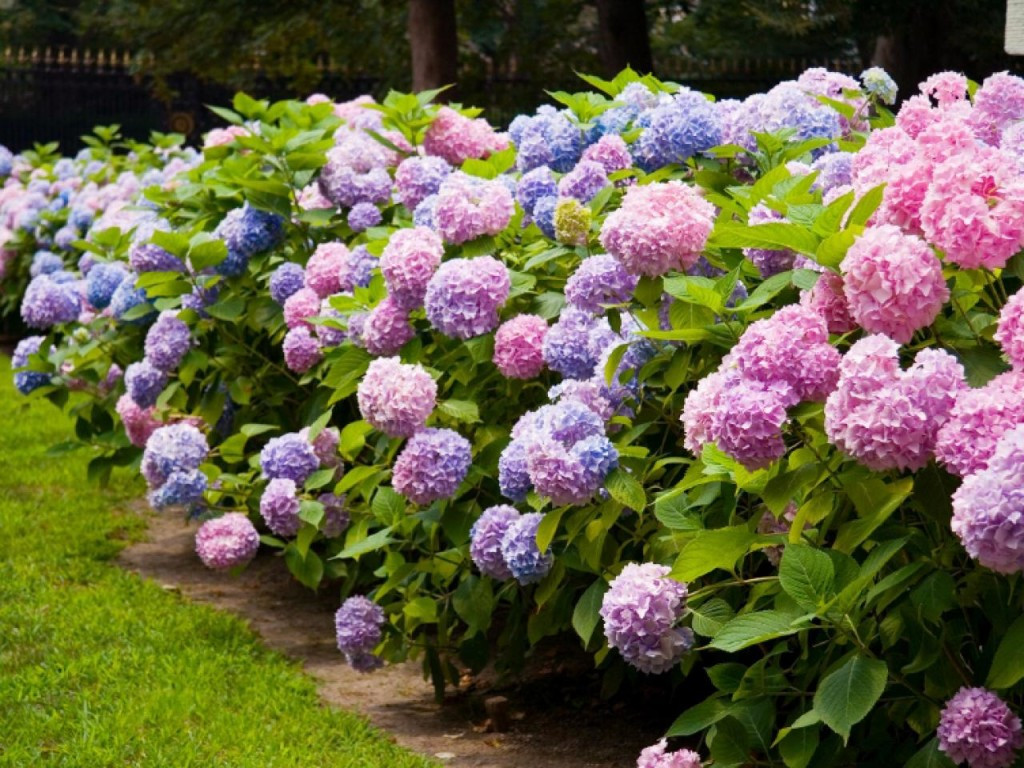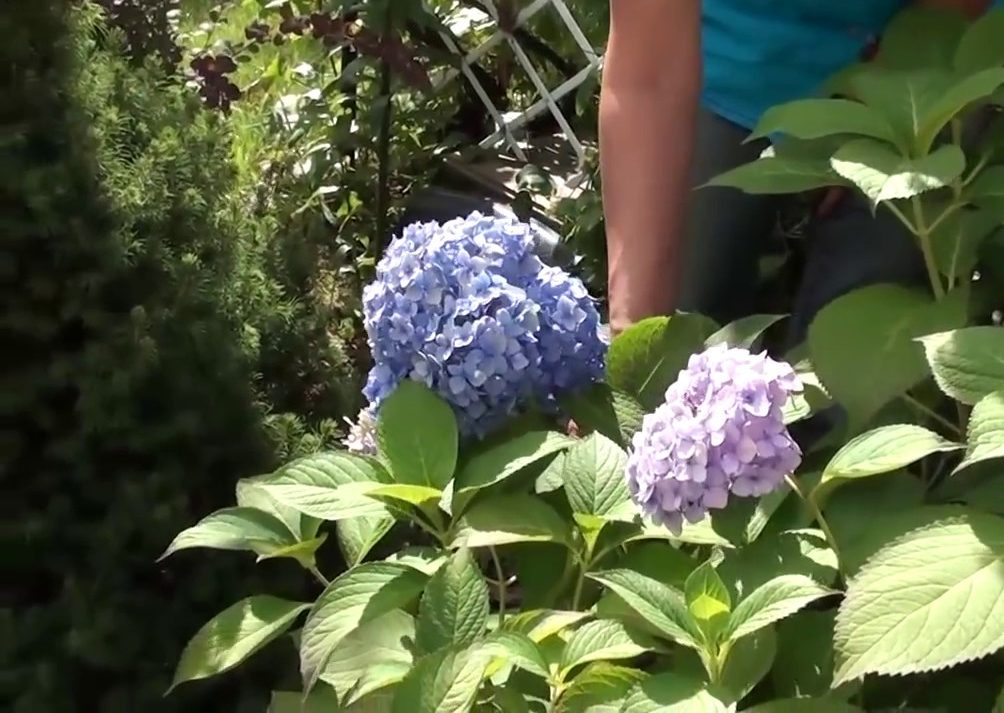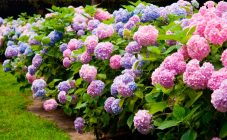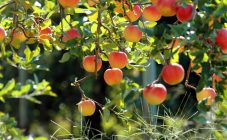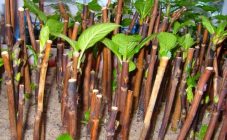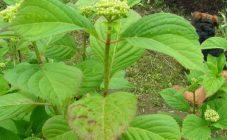Content:
Hydrangea is a small shrub (1-3 meters), less often a tree and liana (up to 30 m). Depending on the variety, the plant can be deciduous, evergreen, have huge inflorescences that make up lush caps. Flowers can be white, blue, pink, lilac and red, in most cases white color predominates, inflorescences are large, paniculate, spherical or corymbose. Hydrangea blooms for a long time - from spring to late autumn. Most of the varieties bloom from early or mid-July.
In order for healthy and beautiful flowers to please the eye and decorate the garden, first of all, you should take proper care of them. Watering is the most important maintenance item; the soil around the plant should almost always be moist.
So that the flower does not freeze, it should be covered in time and correctly for the winter, otherwise there will be no flowering in the spring.
Causes of small hydrangea inflorescences
Even seasoned gardeners have problems in growing hydrangeas: it seems that the care of the plant is good, but it still blooms poorly. So why does hydrangea have small inflorescences? There are a lot of reasons why hydrangea is shallow, some of them are the most commonplace.
The main reasons for small inflorescences:
- incorrect pruning - systematic errors of this procedure will lead to a complete or partial absence of flowers;
- insufficiently developed root system - young plants have rather fragile and weak roots, when transplanted they may not produce inflorescences for 2-5 years;
- unsuitable location;
- improper watering - an excess or lack of moisture is detrimental to the plant;
- adaptation of the acquired seedling;
- alkalization of the soil - for prevention, additives are used to regulate the acidity of the soil;
- diseases, pests - despite the high resistance to pests and diseases, erroneous agricultural technology leads to various kinds of lesions (chlorosis, powdery mildew, aphids, spider mites);
- artificial stimulation of flowering - such a procedure reduces the appearance of flowers next year to zero;
- improperly selected variety - heat-loving ones will not tolerate the harsh northern conditions;
- the youth of the plant - most hydrangeas bloom after 3-5 years.
Methods for eliminating small inflorescences
To understand why hydrangea has small flowers, it is necessary to analyze all the main aspects related to caring for the plant, and make a decision to eliminate the inappropriate ones.
In order for the hydrangea to please with lush and large flowers during flowering, you must:
- correct pruning:
- water the plant regularly:
- feed in a timely manner, choose the right fertilizers:
- select a variety taking into account territorial conditions.
Hydrangea has faded what to do next? The first step is to do pruning. It is the correct and timely pruning that is the key to lush and large hydrangea flowers. A mistakenly executed haircut promises the appearance of scanty and small inflorescences or their absence at all. Depending on the variety, the type of pruning is selected; for ease of understanding, all types of hydrangeas are divided into 2 groups.Do not prune the hydrangea immediately after flowering, as new shoots may grow and may freeze in winter.
1st group
It includes all varieties of large-leaved, serrate, oakleaf and petiolate hydrangeas and prickly Macrophylla. They have the same property - the laying of new flower buds on last year's shoots. Therefore, in the fall, only modest cosmetic pruning can be done for such varieties: old, weak and damaged branches are removed. In addition, last year's inflorescences are harvested after the first pair of strong, healthy flower buds.
The best time for pruning these types of hydrangea is spring, when frozen, damaged branches are clearly visible among the green buds. The bark of a dead shoot looks dryish, has a greenish-yellow or yellow-brownish tint. The petiolate hydrangea should not be cut at all in the early years, due to its already slow growth.
2nd group
It includes all varieties of tree and panicle hydrangea. Pruning is carried out in early spring, removing all last year's shoots, keeping one pair of buds. New shoots are formed already in the current season, beautiful and large inflorescences bloom on them with success.
Hydrangea, or Hydrangea, is a fairly moisture-loving plant, which should be watered not only regularly, but also correctly:
- on cool days, watering is enough once every seven days;
- on hot, dry days - once every three days;
- plants under 3 years of age are watered more often, often daily, depending on the weather;
- heavy clay soils require less watering, and sandy and sandy loam, on the contrary, more frequent and abundant;
- use soft water: rainwater, filtered or settled barrel (at least 5 days);
- 1-1.5 buckets are poured under the bush at a time.
Feeding errors
A deficiency, as well as an excess, of certain substances can harm the full growth and flowering of a plant. In this case, an excess of nitrogen contributes to the active release of new shoots, which do not have time to stiffen before the arrival of cold weather, respectively, the young branches die, and with them the flower buds.
Feeding with nitrogen:
- prohibited during the ripening of peduncles (activation of the appearance of new greenery, which prevents the high-quality formation of buds and full flowering);
- held in the spring before the start of the growing season.
It is not recommended to add more nitrogen, the remaining 3 or 4 times per season they feed the hydrangea with potassium, phosphorus salts. To prepare for the winter, rotted manure or compost is introduced.
A properly selected variety is the key to successful hydrangea cultivation, since most varieties are completely unsuitable for the short, cool summer season in the northern and northwestern regions of Russia. Preference is given to local, zoned varieties, otherwise the plant will give lush foliage, but it will not have time to form flower buds.
What to do when the hydrangea has faded? First of all, you need to remove dry inflorescences and then start pruning. Depending on the variety, insulation may be required for the winter.
Indoor hydrangea provides additional care in winter:
- maintain temperature indicators within 16-17 ° C;
- provide bright, artificial lighting;
- watered in winter as the substrate dries up, about two days later;
- remove small side shoots and root shoots;
- 1 a month water the plant with a weak solution of potassium permanganate to prevent root rot.
Removing the first hydrangea flowers
Hydrangeas are perennial plants, so that they bloom beautifully and magnificently for a long time, they must be properly rejuvenated.
In addition to pruning shoots, flowers are also removed, taking into account some of the nuances:
- remove the color released by the hydrangea in the first year of life, since the growing plant requires a lot of strength to strengthen the root system and growth, and the buds will take away most of them;
- in subsequent flowering, there is no need to remove the flowers; faded, dead flowers must be removed;
- the panicles are cut off after they have begun to bloom, so that the branches give new shoots before the onset of frost.
Also, many are interested in the question of whether it is necessary to remove the first hydrangea flowers, and how will this affect the flowering? Most gardeners believe that removing the first flowers can help a larger, better quality flower growth. Usually one third of all first colors are removed.
In order not to wonder why the hydrangea has grown small caps of flowers, and where such meager inflorescences come from, all the above recommendations for care should be followed. It depends on the owner how your hydrangeas will bloom, because in order to get high-quality inflorescences, you will have to work hard.

